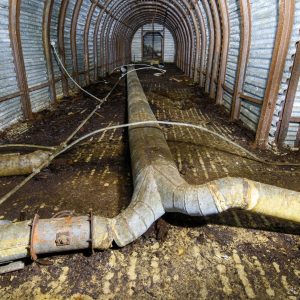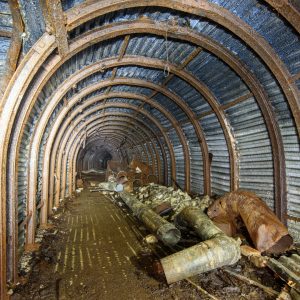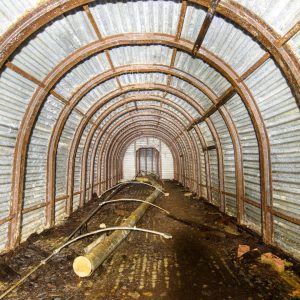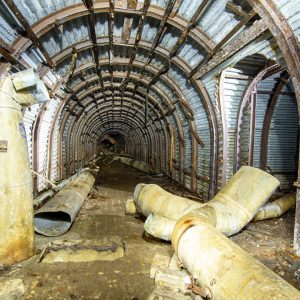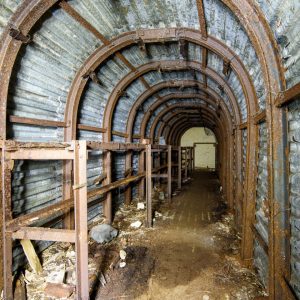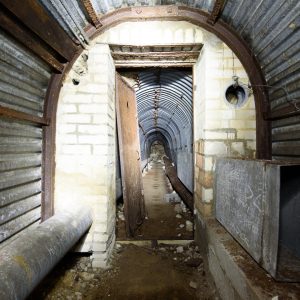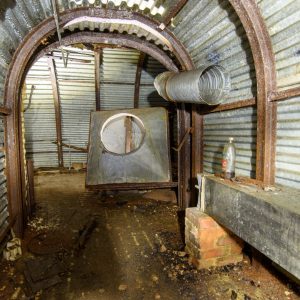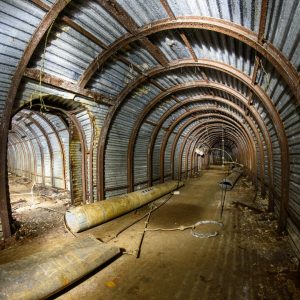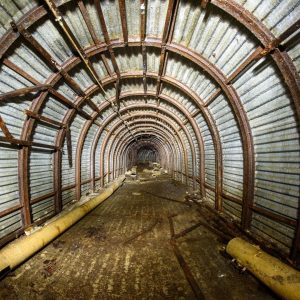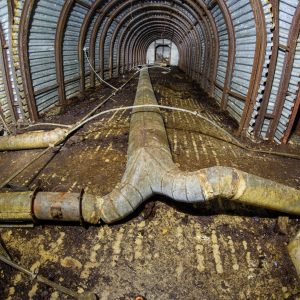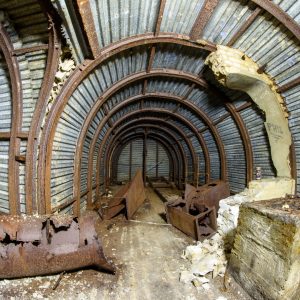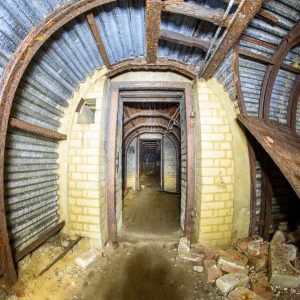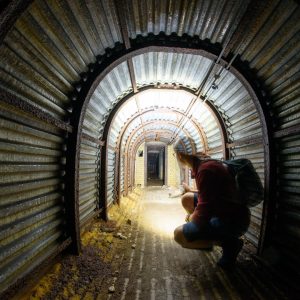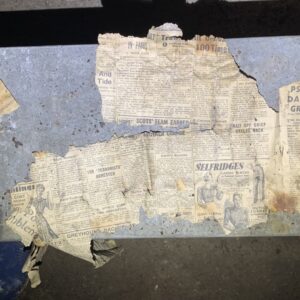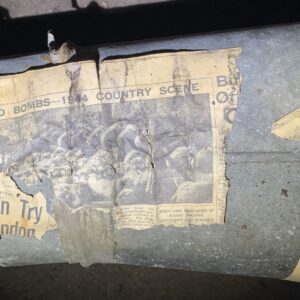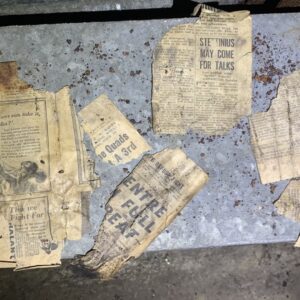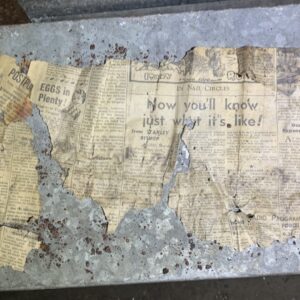During the first half of 1941 a network of tunnels was excavated into an old chalk quarry just north of the town of Reigate, known as Underbeeches, that had been abandoned by the owners due to instability in the chalk. The site provided the ideal location for an underground shelter as it provided 90 feet of cover above the tunnels. The tunnels were laid out on a grid pattern with two parallel galleries with nine cross passages (chambers) for accommodation and plant rooms for a generator and gas filtration equipment; three access adits were constructed. The tunnels covered 3,000 feet of tunnels that contained rooms for 24-hour radio transmitting, with teleprinters, offices and cipher rooms. It was designed to be gas-and shell-proof. Iron doors meant the whole premises could be sealed off while ventilation shafts, one of which can still be seen, meant fresh air could circulate.
Construction was started by the 171 Tunnelling Company of the Royal Engineers, with 173 Tunnelling Company (Tunbridge Wells), alongside elements from 171 & 172, taking over construction from 7th March 1941 and completing construction on 13th June 1941. They excavated nearly 100,000 cubic feet of material, the tunnels were lined with standard colliery rings and corrugated iron. A number of surrounding buildings were requisitioned for use as accommodation, it is rumored that some houses at the base of the hill were discreetly reinforced and armed to protect the tunnels, while others were repurposed as army accommodation for the staff.
General Montgomery (Monty) was stationed in at the tunnel complex known as Underbeeches. He was the commander of the South Eastern Army that would have been tasked with defending England from invasion and planning future battles, such as the Dieppe Raid. He also commanded the D-Day Landings at the end of WW2 in Europe. It is not known how long Monty spent at the tunnels, but he reportedly ran in the Surrey Hills each morning to keep fit.


